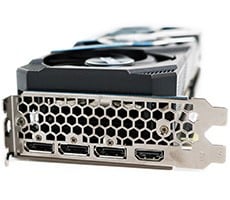Overclocked Results
For our last batch of tests, we tried running the OCZ kit with SPD timings, and raised the front side bus on the Asus P5WD2 Premium as high as possible. As we've seen in the past, we appear to be somewhat limited with overclocking our Pentium 4 550 on this motherboard. The ceiling with the current setup appeared to be a 234MHz FSB, resulting in our CPU running at 3.98GHz and the memory at 780MHz effective. That gave us our second frame of reference. We then backed the FSB off slightly, and changed the memory divider from a default setting of 3:5 to 1:2. Using this ratio, we were able to push the memory up over 900MHz, stopping at 920MHz. One last time we ran our benchmark suite to see how the performance changed. As with the Low Latency testing, voltages were raised 0.1V, so that the RAM was running at 2.2V. Please note, the results below reflect only the overclocked performance of OCZ's modules, the overclocked performance results for the Corsair and Kingston memory kits mentioned earlier are available here.
|

The scores increased expectedly in the overclocked testing as far as SANDRA was concerned. The largest jump occurred with initial overclock to 780MHz where the divider remained at 3:5. Overclocking to memory to 780MHz gave us a 500 point boost over the original SANDRA scores. However, moving upwards to 920MHz only gave us an additional 70 points.
|

The overclocked PCMark05 results were nearly identical in relation to performance gains. As one would expect, overclocking the system increased the overall performance, by nearly 600 across the board. Once again, we noticed a much smaller increase in our second attempt at raising memory speeds.
|

In our final look using Unreal Tournament 2004 while overclocking the system we saw an increase of just over ten frames per second when we reached 780MHz, and then another five frames at 920MHz. Combined, that equalled about a 16 frames per second improvement, or roughly a twelve percent increase in memory bandwidth.






